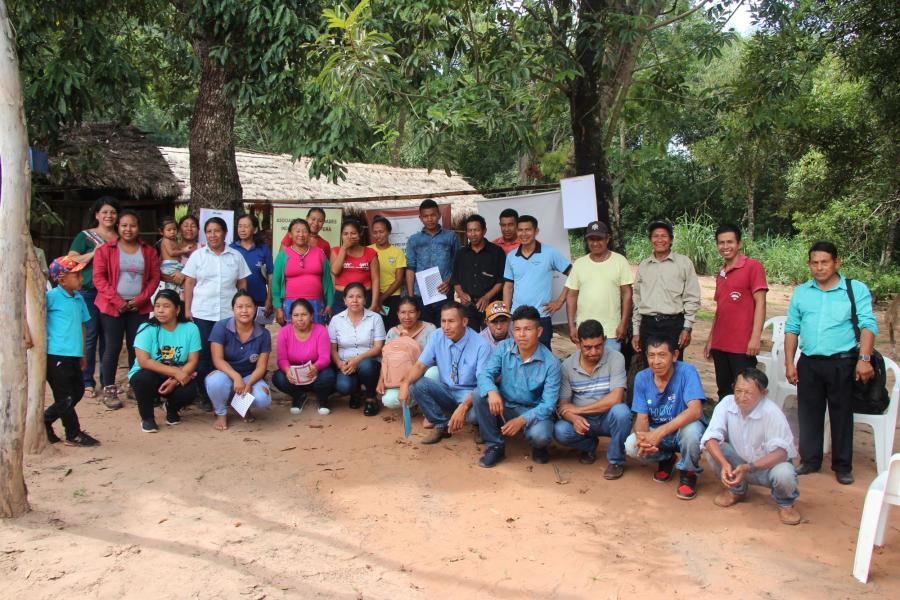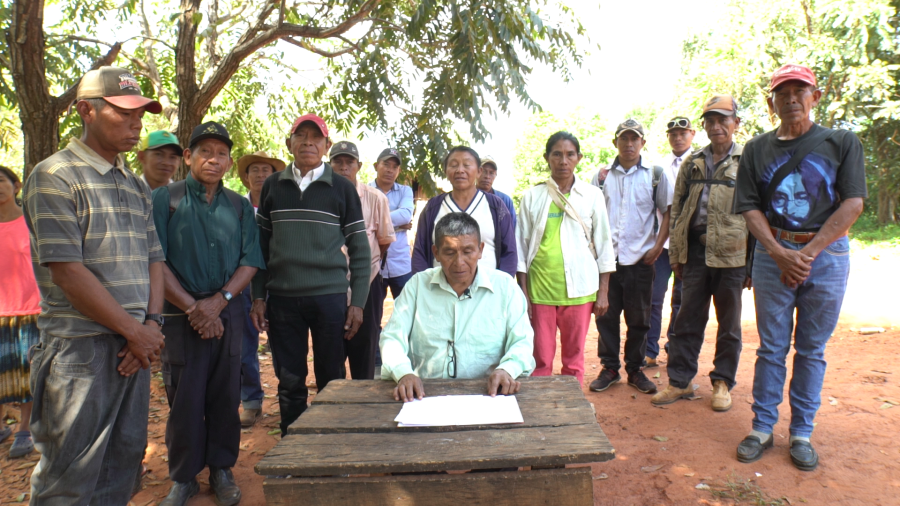The situation of Eastern Paraguay's indigenous population improved from 1977 to 1982. Much of the improvement came in the critical areas of land acquisition and rights. Although less than a handful of communities have received formal title, considerable demarcation has taken place and a few communities have been recognized as National Indian Colonies, an essential step toward eventual titling. Prior to 1977, independent Indian communities lacked even access to this process. Two non-Indian organizations have been particularly active in aiding Indian peoples to express their land needs and desires, the government Indian Institute (INDI), and Projecto Guarani, a private organization funded by the Swiss Red Cross. A new law governing Indian affairs, Ley 904/81 "Estatuto de Comunidades Indígenas," marked, juridically, a new public attitude toward indigenous peoples. However, since 1982 the stagnating Paraguayan economy and a general decline in INDI's power has stalled further gains. Indians are again on the defensive.
On July 26, 1985, a community of 135 Mbya-Guarani Indians living in the eastern Paraguayan province of Caaguazu was evicted from their land. The eviction was carried out by the owner of a neighboring 90,000 hectare ranch known as "La Golondrina." The owner threatened the Mbya and alluded to former violence by his ranch hands on them. Their land, he said, was needed immediately for pastureland; anyone who would burn their own home was offered 5000 guaranies (the price for about ten days of work).
The eviction came in the midst of one of Paraguay's coldest and dampest winters. It was followed by an outbreak of measles among the people. Almost all of the 135 people are still sick and many now also have pneumonia.
Three weeks after the eviction, the community did not know the whereabouts of their political leader, the "cacique." He had fled to the jungle after the ranch owner threatened his life, and it was feared that the ranch hands, combing the jungle looking for him, would find him. Most of the evacuation was carried out by women because the community's men were working for wage labor on other ranches. One woman gave birth during the flight.
La Golondrina
"La Golondrina" is a physically rich property, with well-developed networks of streams on northwestern and souteastern sections - both of which are populated by Guarani communities. Only after 1976 was the ranch intensively exploited. Since then La Golondrina has developed a reputation for the systematic mistreatment of the Indian peoples living and working on or traversing its lands.
I first heard of the property in 1979 in connection with a community called Yvyra'i ty, a community of Chiripa-Guarani located on the northwestern edge of the ranch. The Guarani of Yvyra'i ty were being forced off their lands - lands which they had occupied for forty years. Some members were leaving, some had decided to stay. The community could find no one to help them protect their rights. Indeed the Guarani were advised by those who might have helped, to leave quietly - that La Golondrina was too powerful to challenge. Between that time and 1982, when I again heard of Yvyra'i ty, the community had dwindled from about forty houses to only fifteen.
By 1982, the situation of those who had elected to stay on their lands had deteriorated. The house of one of those who had refused to move was burned by the ranch foreman. Others who remained were allowed to stay as long as they worked for the ranch - payment coming only in goods and marked against debt. They were, as the Guarani put it, like domestic animals. They described La Golondrina as a place without law. It was one of the few places left in Paraguay, they insisted, at which a ranch owner and his men could do as they pleased; it was still "like the old days, when everyone was treated that way."
Later I learned of other incidents at the ranch. About 1977 an Ache-Guayaki man passing through La Golondrina was killed by ranch hands. The Ache who told me this story recoiled at the thought of the ranch. They called the workers there "bad people" and said that they "never went near the ranch again." In at least one instance a religious ceremony was broken up by men from La Golondrina, forcing the Guarani participants to flee into the jungle.
Efforts to Curb La Golondrina's Lawlessness Stumped
All attempts to investigate the lawlessness at La Golondrina have served only to emphasize the power of the ranch, and the impotence of civil authority in the face of that power. For instance, the team sent by the Indian Institute and Projecto Guarani to investigate the house-burning incident was confined to the administrative part of the ranch. They were barred by the ranch foreman, on the owner's instructions, from visiting the Indian community, or from talking privately with any Guarani. Instead the foreman selected witnesses and brought them to the investigators. Their depositions on the incident were taken in the office of the ranch administrator, in his presence and that of the foreman.
How is it, now that law has extended to the Paraguayan countryside that people no longer have affective legal recourse in the face of such actions.
La Golondrina is an extreme case of conditions that exist for Indian peoples, to a greater or lesser degree, throughout Paraguay. Its owner - the only remaining free newspaper in Paraguay is afraid to publish his name - is Bias N. Riquelme. One of Paraguay's leading businessmen. The president of Paraguay's "union" of industrialists, he owns at least four other ranches larger than 50,000 hectares in size. Mbya-Guarani lands are located on at least two of their ranches; in 1982, one family group of fifteen living on one property was located.
Mr. Riquelme's strength is, however, profoundly political: his patron is General Andrés Rodriguez, head of the most powerful division in the Paraguayan military, and second most powerful man in Paraguay. With the Casado firm in Paraguay's Chaco, powerful enough to systematically violate the rights and dignity of Indian peoples.
The eviction of the Mbya-Guarani from Guyrapa - the culmination of myriad violent and sustained incidents similar to those described above - is a serious matter. It is one of the most profound challenges of recent years to the Indian peoples' ability to defend themselves, and to express their will, within the Paraguayan nation. Clearly neither the Indian Institute, nor Projecto Guarani, have the political strength to challenge what has happened. By the time Cultural Survival Quarterly went to press, the Guyrapa case was not anywhere near resolution; the Paraguayan courts had accepted the case, however, and an order has been issued prohibiting La Golondrina from interfering with, or molesting, any Mbya-Guarani who choose to return to their community.
Its unlikely that a parcel of land to the Guyrapa peoples' liking will be secured for them. It is more likely that adjudication will drag on for years, leaving the Mbya insecure and defenseless against bothersome neighbors. But whatever the outcome is, the events at Golondrina provide a stark and deeply regrettable illustration of the standstill to which efforts to secure the rights of Indian peoples in Paraguay have been brought.
Article copyright Cultural Survival, Inc.



